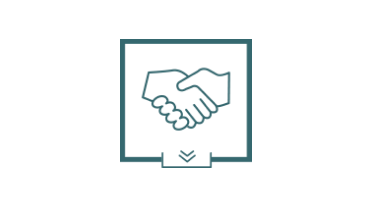Human Capital Management (HCM) refers to the strategies, practices, and tools used to manage the workforce effectively. HCM encompasses all the functions required to recruit, manage, and develop employees in an organization. The goal is to optimize employee performance and ensure the business meets its strategic objectives.
Elements of Human Capital Management
Talent Management
Talent management involves attracting, developing, and retaining the best employees. It includes processes like recruiting, onboarding, performance management, and succession planning, all aimed at helping employees reach their full potential.
Workforce Management
This includes the day-to-day activities that keep the business running, such as scheduling, time and attendance, and task management. Workforce management ensures that employees are in the right place at the right time to maximize productivity and efficiency.
Payroll and Benefits Administration
One of the critical elements of HCM is ensuring that employees are paid accurately and on time. Payroll and benefits administration also covers health insurance, retirement plans, and other benefits that contribute to employee satisfaction.
Compliance
Staying compliant with federal, state, and local labor laws is essential for any organization. HCM helps businesses navigate complex regulations, ensuring that they remain compliant and avoid costly penalties.
Benefits of Human Capital Management
Implementing a solid HCM strategy can lead to numerous benefits for your business, including:
Improved Productivity
Streamlined processes and efficient workforce management lead to higher productivity. It’s like having a well-oiled machine that runs smoothly and gets things done faster.
Enhanced Employee Engagement
When employees feel valued and involved, they’re more likely to put in their best effort. It’s the difference between a job and a passion.
Cost Savings
Efficient HCM practices reduce administrative costs and improve overall efficiency. Imagine cutting down on wasted time and resources, and saving money in the process.
Compliance and Risk Management
Staying on the right side of labor laws helps you avoid costly legal issues. It’s about keeping your company safe and sound.
Human Capital Management (HCM) Challenges
While HCM offers many benefits, it also comes with its own set of challenges:
- Keeping Up with Compliance: Labor laws and regulations are constantly changing, making it difficult to stay compliant.
- Data Security: Protecting employee data is critical, and any breach can lead to severe consequences.
- Integration of Technology: Implementing new HCM technology can be complex and requires careful planning and execution.
- Employee Engagement: Keeping employees motivated and engaged is an ongoing challenge, especially in a remote or hybrid work environment.
Why Human Capital Management (HCM) is Important
HCM is like the backbone of your company. It’s essential for any organization looking to thrive in today’s competitive landscape. By adopting comprehensive HCM practices, you can optimize your workforce, enhance employee satisfaction, and achieve long-term success. Whether you’re a small business or a large enterprise, having a solid HCM strategy in place is crucial.
How HCM Technology Can Help
Modern HCM solutions use technology to automate and optimize HR processes. These tools provide a centralized platform for managing everything from recruitment to retirement. Here are some key features:
- HR Analytics: Data-driven insights to guide decision-making and strategic planning. It’s like having a crystal ball that helps you make smarter HR decisions.
- Self-Service Portals: Allowing employees to handle HR tasks themselves, like updating personal information and accessing pay stubs. Think of it as giving your team the power to manage their own HR needs easily.
- Mobile Access: Enabling HR functions on the go for greater flexibility. It’s about being able to handle HR tasks anytime, anywhere, right from your smartphone.
Human Capital Management FAQs
What's the Difference Between HCM and HRMS?
HCM (Human Capital Management) focuses on the strategic aspects of managing people, such as talent management and employee development. HRMS (Human Resource Management System) is more about the administrative side of HR, like payroll and benefits administration. Think of HCM as the big-picture strategy and HRMS as the day-to-day operations.
Does HCM Include Payroll?
Yes, payroll is a critical component of HCM. Efficient payroll management ensures that employees are paid accurately and on time, which is essential for maintaining employee satisfaction and compliance with labor laws.
What are the Objectives of Human Capital Management?
The main objectives of HCM are to attract, develop, and retain talent, improve employee performance, and align HR strategies with business goals. In simple terms, HCM aims to make sure you have the right people in the right roles who are doing the right things to help your business succeed.
Complete Payroll Can Help Your HCM
When selecting an HCM system, it’s essential to consider your business's specific needs. Look for a solution that offers flexibility, scalability, and robust features to support your HR functions. A well-integrated HCM system should enhance efficiency, improve compliance, and support your organization's overall growth.
Human Capital Management is essential for any organization looking to thrive in today’s competitive landscape. By adopting comprehensive HCM practices, you can optimize your workforce, enhance employee satisfaction, and achieve long-term success. Whether you’re a small business or a large enterprise, Complete Payroll has the solutions to meet your needs.
Discover how Complete Payroll’s HCM solutions can transform your HR practices and help your organization achieve its goals. Contact us today to learn more.




















 Get Instant Blog Notifications
Get Instant Blog Notifications


